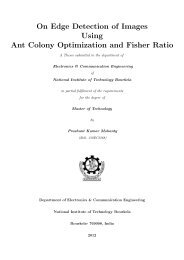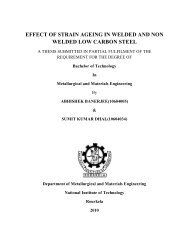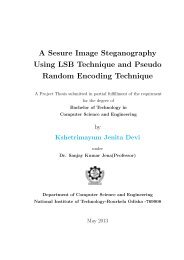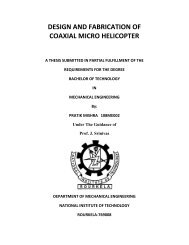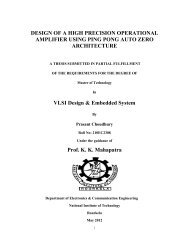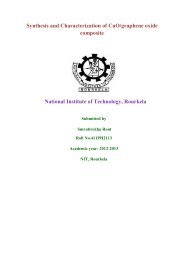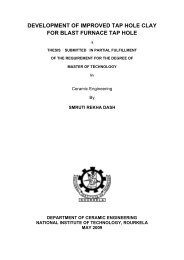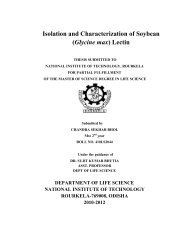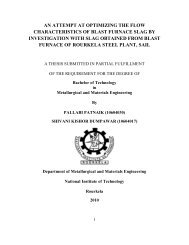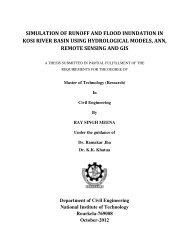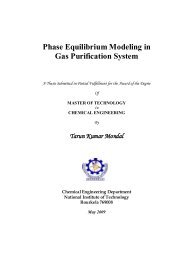FPGA Based Network Security architecture for High Speed Networks
FPGA Based Network Security architecture for High Speed Networks
FPGA Based Network Security architecture for High Speed Networks
You also want an ePaper? Increase the reach of your titles
YUMPU automatically turns print PDFs into web optimized ePapers that Google loves.
2.2 Symmetric key Cryptosystem<br />
International Data Encryption Algorithm (IDEA) [6] in 1992. Claims have been<br />
made that the algorithm is the most secure block encryption algorithm in the<br />
public domain.<br />
Basic Structure<br />
Figure 2.1: Data flow of IDEA Cipher<br />
IDEA is a symmetric, secret-key block cipher. The keys <strong>for</strong> both encryption<br />
and decryption must be kept secret from unauthorized persons. Since the two<br />
keys are symmetric, one can divide the decryption key from the encryption one or<br />
vice versa. The size of the key is fixed to be 128 bits and the size of the data block<br />
which can be handled in one encryption/decryption process is fixed to 64 bits. All<br />
data operations in the IDEA cipher are in 16-bit unsigned integers. When pro-<br />
cessing data which is not an integer multiple of 64-bit block, padding is required.<br />
The security of IDEA algorithm is based on the mixing of three different kinds<br />
of algebraic operations: EX-OR, addition and modular multiplication. IDEA is<br />
based upon a basic function, which is iterated eight times. The first iteration<br />
operates on the input 64-bit plain text block and the successive iterations operate<br />
on the 64-bit block from the previous iteration. After the last iteration, a final<br />
9





